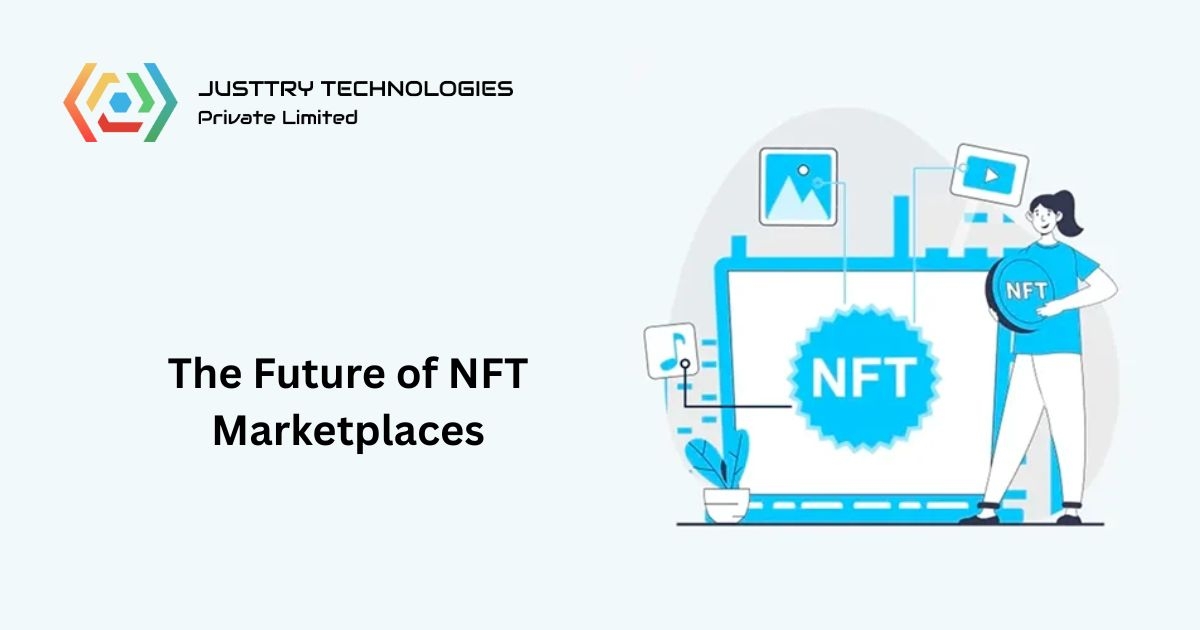The Future of NFT Marketplaces: Trends and Innovations Beyond 2026

The Non-Fungible Token (NFT) ecosystem is adopting the principle of digital trading as the basis for art ownership and identity, and is no longer purely speculative. In the year 2026, the NFT space will stop being the domain of collectibles and will become an infrastructure supporting the functioning of digital economies. Emerging NFT marketplace development services are now designing the framework of this change that allows creators and brands to experiment with the economic landscape and redefine the scope of digital value.
What is the Shift Toward Utility-Driven NFTs
Days of pure Artistic NFTs have disappeared. The new stage focuses on practical utility, as the holders receive a right to exclusive experiences, membership rights, or governance rights.
Future NFTs will anchor:
-
Smart access to events and communities
-
Tokenized physical assets (like property or luxury goods)
-
Brand loyalty programs powered by blockchain
This evolution represents a shift from aesthetics to functionality, turning NFTs into instruments of interaction and engagement rather than static collectibles.
AI Integration in Next-Gen Marketplaces
AI will transform the way NFTs are curated, valued, and consumed. The algorithms that will be run by AI will tailor the recommendations, verify digital assets, and even create new pieces of the creative work. Predictive analytics will be used by the marketplaces to predict the performance of assets and streamline the trading processes.
The intersection of AI and NFT marketplace creation will introduce the platforms that can learn through the dynamics of user interaction and provide immersive and dynamic digital ecosystems with a harmonized balance between creativity and business.
Cross-Chain Interoperability: The Future Standard
The lack of integration in NFT markets among different blockchain networks has been a hindrance to smooth adoption. The future of NFT marketplaces will remove this separation with cross-chain interoperability, where users can mint, trade, and transfer NFTs across a variety of networks.
By 2026, the focus will turn towards individual ecosystems to become universal in nature, where interoperability is guaranteed to make sure that there is liquidity and inclusiveness across the decentralized applications.
Regulatory Maturity and Global Expansion
With the maturation of the NFT economy, governments will develop more explicit legal frameworks regarding ownership, taxation, and intellectual property. This change of regulation will result in confidence among the institutional investors and traditional industries.
The adoption of NFTs in China is already structured, with countries such as China investigating how NFTs can be used to improve its marketplace, not by inhibiting innovation. An open marketplace will empower artists and safeguard buyers, and make NFTs an accepted asset category in the international digital economy.
Immersive Experiences: The Rise of Metaverse-Linked Marketplaces
NFTs driven by the metaverse will bring the virtual and real worlds closer together. The marketplaces will become 3D environments where users can socialize, buy, and sell digital items in real time.
These immersive environments will:
-
Integrate AR/VR functionalities for real-time asset visualization
-
Offer branded virtual galleries and social trading experiences
-
Support dynamic NFT assets that evolve with user interaction
This confluence of NFTs and immersive technology will redefine the way individuals perceive digital ownership and identity.
Sustainable NFT Ecosystems and Green Innovations
The sustainability of blockchain has been an issue. Nevertheless, the sustainability of NFT ecosystems will also be redefined through innovation with energy-efficient mechanisms of consensus and carbon-neutral frameworks.
NFT marketplace Solutions will use proof-of-stake algorithms and renewable energy-powered facilities to reduce carbon footprints. The future of the development companies of the NFT marketplace is in maintaining the balance between the advances and a responsible attitude to the planet.
Conclusion
After 2026, the NFT marketplaces will not only represent trade but also digital trust, innovation, and development in society. With platforms becoming smart, interoperable, and sustainable ecosystems, there will be no distinction between virtual and real assets. First in the transformation, JustTry Technologies, an innovative NFT marketplace development company, is still defining the decentralized future, amalgamating innovation, sustainability, and human creativity. Is this convergence the beginning of a new digital civilization?
- Questions and Answers
- Opinion
- Motivational and Inspiring Story
- Technology
- Live and Let live
- Focus
- Geopolitics
- Military-Arms/Equipment
- Segurança
- Economy
- Beasts of Nations
- Machine Tools-The “Mother Industry”
- Art
- Causes
- Crafts
- Dance
- Drinks
- Film/Movie
- Fitness
- Food
- Jogos
- Gardening
- Health
- Início
- Literature
- Music
- Networking
- Outro
- Party
- Religion
- Shopping
- Sports
- Theater
- Health and Wellness
- News
- Culture

